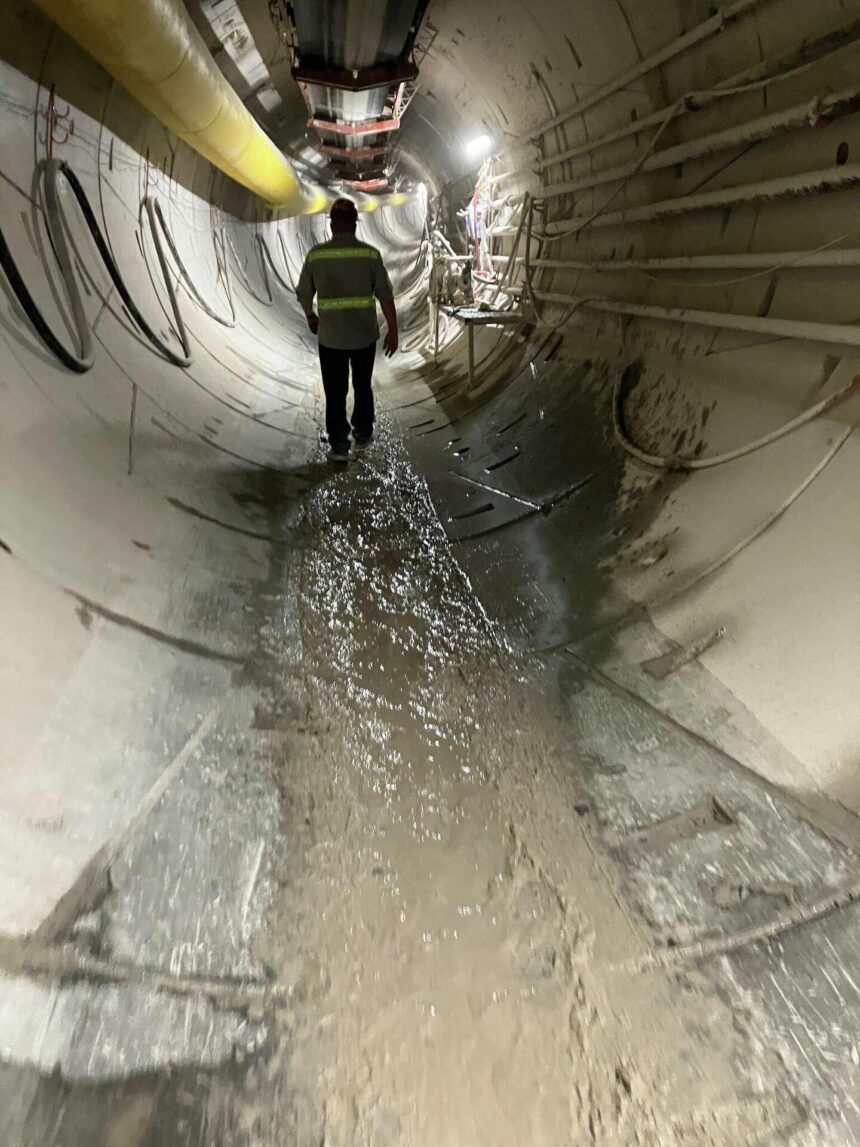Incident at Las Vegas Strip Tunnel Project Highlights Safety Challenges
A worker engaged in tunnel excavation for The Boring Company near the vibrant Las Vegas Strip sustained injuries during construction activities, prompting an immediate response from emergency personnel. This project, designed to alleviate traffic congestion in one of the nation’s busiest entertainment districts, has temporarily paused certain operations as investigations proceed. Medical teams swiftly provided care and transported the injured individual to a local hospital, where their condition is currently stable.
Key safety issues under review include:
- Inspection and maintenance of excavation equipment
- Effectiveness and adequacy of personal protective equipment (PPE)
- Preparedness and efficiency of on-site emergency protocols
| Focus Area | Current Status | Planned Actions |
|---|---|---|
| Incident Investigation | Active | Thorough safety audit scheduled |
| Injured Worker’s Condition | Stable | Ongoing medical monitoring |
| Project Timeline | Temporarily Delayed | Enhanced safety enforcement review |
Comprehensive Review of Safety Practices Initiated
Following the accident, regulatory authorities have launched an in-depth examination of the safety measures implemented at the tunnel construction site. Investigators are carefully reconstructing the events leading up to the injury, focusing on compliance with occupational safety standards and the adequacy of emergency response actions. Officials emphasize that this inquiry aims to uncover any procedural gaps and reinforce protective measures to prevent recurrence.
Critical elements under evaluation include:
- Personal Protective Equipment (PPE) Usage: Confirming that all personnel were properly outfitted with required safety gear.
- Hazard Identification and Mitigation: Assessing the effectiveness of risk assessments and control strategies.
- Training and Oversight: Reviewing the scope and quality of worker training and supervisory practices.
- Emergency Response Efficiency: Analyzing response times and adequacy of first-aid measures post-incident.
| Safety Aspect | Review Status | Next Steps |
|---|---|---|
| PPE Compliance | Under Examination | Audit PPE documentation and report findings |
| Hazard Assessment | Ongoing | Conduct detailed site inspections |
| Training Programs | Being Assessed | Interview workers and supervisors |
| Emergency Procedures | Reviewed | Analyze dialogue and response logs |
Industry Experts Advocate for Stronger Safety Standards in Tunnel Construction
In light of the recent injury at the Las Vegas tunnel site, safety specialists are calling for enhanced protective measures tailored to the unique hazards of subterranean construction. While underground transit systems represent cutting-edge solutions to urban congestion, the confined and complex environment demands rigorous safety protocols. Experts recommend the following improvements:
- Implementation of predictive risk modeling to anticipate and mitigate excavation dangers.
- Frequent, scenario-based safety drills designed specifically for tunnel emergencies to ensure rapid, coordinated responses.
- Upgraded protective equipment engineered to withstand the specific challenges of underground work, such as limited visibility and confined spaces.
- Continuous compliance monitoring with real-time audits throughout the project lifecycle.
To illustrate,the table below outlines common safety incidents in urban tunneling and corresponding preventive strategies:
| Incident Category | Typical Causes | Preventive Measures |
|---|---|---|
| Machinery Failures | Insufficient maintenance,aging equipment | Scheduled inspections,equipment upgrades |
| Structural Collapses | Inadequate support systems,unexpected ground conditions | Comprehensive geological analysis,reinforced shoring |
| Worker Exhaustion | Extended shifts,inadequate rest periods | Shift rotation policies,enforced breaks |
| Air Contamination | Poor ventilation,hazardous gas exposure | Advanced ventilation systems,continuous air quality monitoring |
Strategies to Minimize Accidents in High-Risk Infrastructure Projects
Maintaining safety in complex infrastructure endeavors demands unwavering commitment to protocol adherence and ongoing workforce education.Prior to initiating tunneling operations, thorough risk evaluations must be conducted, with safety measures continuously updated to incorporate technological advancements. Essential safety practices encompass:
- Regularly scheduled emergency drills that address the specific hazards of underground construction.
- Strict enforcement of PPE usage, including helmets, high-visibility clothing, and respiratory protection.
- Deployment of real-time monitoring technologies to track air quality, structural integrity, and equipment status.
- Establishment of clear communication protocols to swiftly report and manage hazards or incidents.
Fostering a workplace culture where every individual is accountable for safety substantially reduces the likelihood of accidents. Assigning dedicated safety supervisors on-site ensures immediate intervention and effective emergency management. The table below outlines critical roles and their safety responsibilities:
| Position | Core Safety Duties |
|---|---|
| Safety Manager | Lead risk assessments and conduct safety audits |
| Field Supervisor | Monitor PPE compliance and enforce safety rules |
| Equipment Operator | Perform daily checks and maintenance on machinery |
| Emergency Response Coordinator | Organize evacuation drills and manage incident responses |
Conclusion: Prioritizing Worker Safety in Urban Tunnel Projects
The recent injury at The Boring Company’s Las Vegas tunnel site underscores the inherent dangers of large-scale infrastructure development. Authorities remain actively engaged in investigating the incident, while the company has committed to full cooperation and prioritizing the health and safety of its workforce. As the project advances, ongoing updates will be shared to inform the public and stakeholders of safety improvements and project status.
